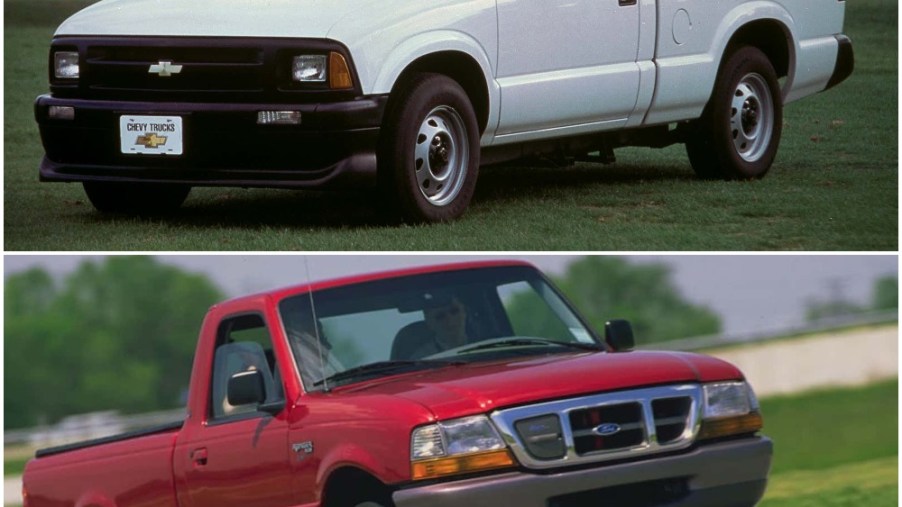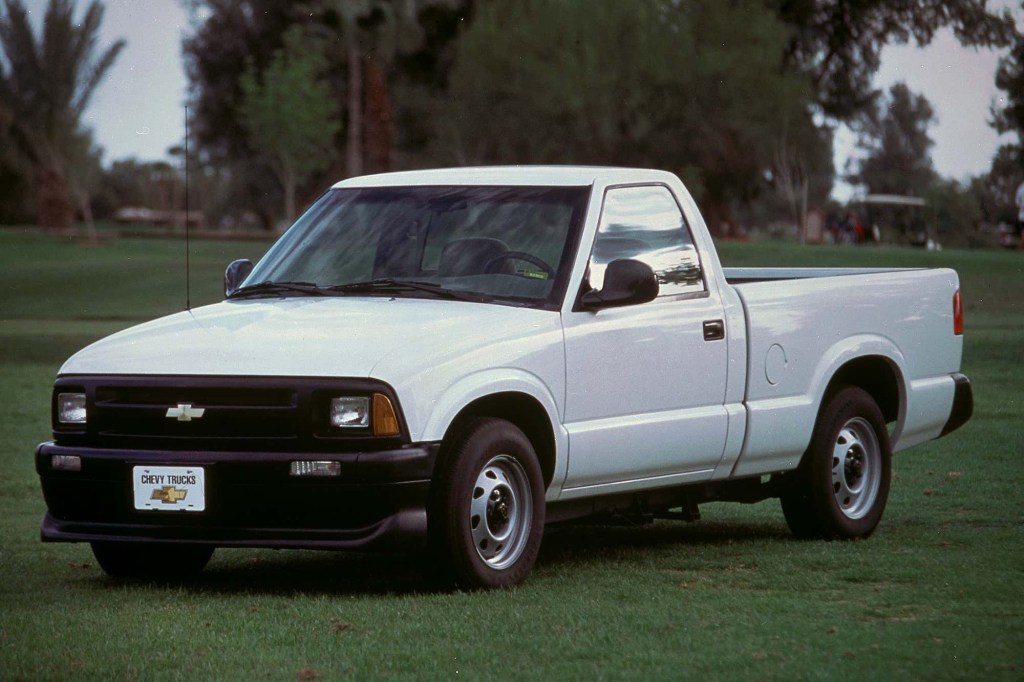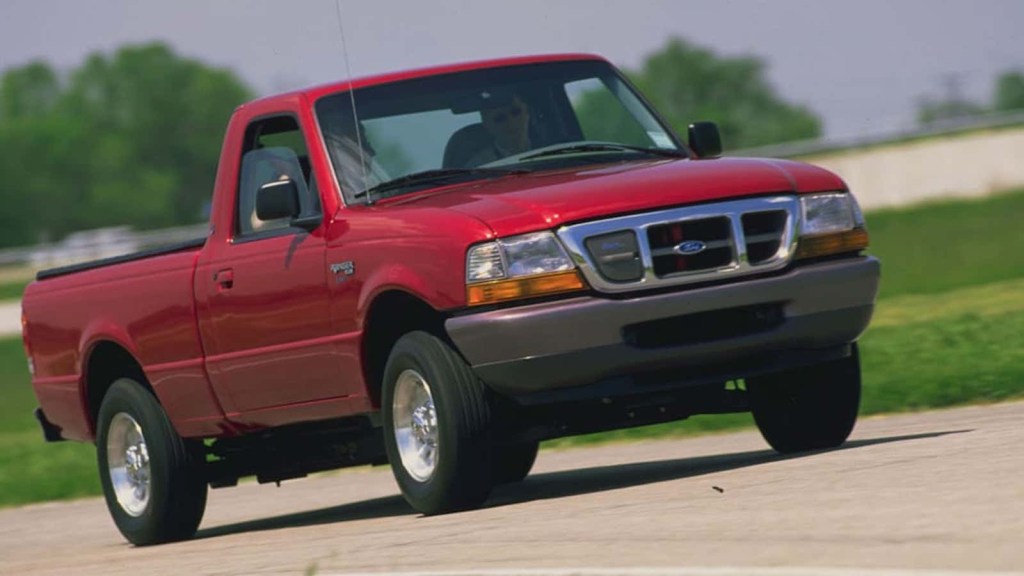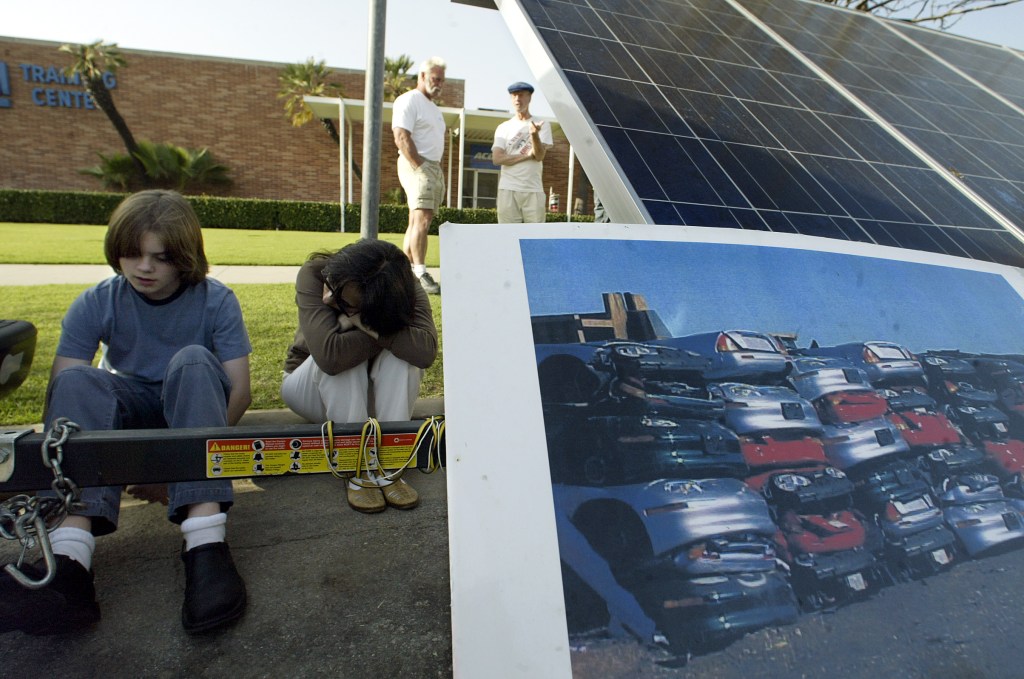
Chevy S-10 vs. Ford Ranger: The Original Electric Trucks
The Ford F-150 Lightning and electric Chevy Silverado are making waves in the work truck segment. But this isn’t the first time Ford or Chevy has dipped into the market. Way back in 1996, GM debuted their production electric vehicle, the EV1. With increased awareness for EVs, the other two American automakers swapped the engines in their light trucks, the Ford Ranger and Chevy S-10, for electric powertrains. But which of the two was better? And where are they now?

Chevy pioneered the electric work truck effort with the Chevy S-10
The electric Chevy S-10 was never destined for a large-scale market, as only 492 were made from 1997 to 1998. Instead, the light work truck was geared towards the utility companies and even the Air Force to be used as electric fleet vehicles. Though, because of the new technology, they didn’t manage a very cheap price point. The truck was sold for $33,000 when new, and for that amount of money, you weren’t getting excellent performace.
For context, the lead-acid battery packs used in these early electric cars were incredibly heavy. The pack alone weight 1,400 lbs, and when put in the modified chassis, the truck ended up being 4,200 lbs. In comparison, a gas-powered S-10 from the same year was only 3,000 lbs. And while that extra weight certainly doesn’t help the performance figures, lead-acid batteries weren’t ideal in the first place.
The electric managed 114 horsepower, lower than that of the gasoline models. It could get up to a 70 mph top speed, but it took 13.5 seconds to accelerate to 50 mph. And the range Chevy claimed the car had was around 60 miles. But after testing, the EPA found that, at a constant 60 mph speed, the truck only had 39 miles of juice. Not to mention it took five hours and 15 minutes to charge.
The lead-acid batteries were swapped with lighter and more efficient nickel-metal batteries in 1998. The range jumped to 88 miles, and the 0-50 sprint now took 10 seconds. Regardless of model year and powertrain, however, the electric S-10 could carry 950 lbs of stuff in the six-foot bed. And while it pales in comparison to today’s EVs, for the first-ever electric work truck, the S-10 performed well.
Ford outlasted Chevy with the Ranger EV

Then along came Ford in 1998, ready to one-up Chevy be electrifying one of their most popular trucks: the Ford Ranger. While the S-10 was produced from 1997 to 1998, the Ranger’s production run lasted from 1998 to 2002. And because of the long production run, Ford built 1,400 of them in comparison to Chevy’s sub-500. So the Ranger was more abundant and lasted longer, but was it any better?
Let’s start with the price. While the $33,000 price tag on the S-10 sounds like a lot for a truck that can’t go 100 miles, the Ranger makes it look like a bargain. Priced at $52,000 back in the 90s, the Ford Ranger electric pickup was more expensive than the base model Ford F-150 Lightning available today. And that lofty price tag is supplemented by lackluster performance.
With just 90 horsepower, the Ranger EV could get 60 miles per charge with the lead-acid batteries (and 80 miles once the nickel-metal hydride batteries were introduced). It, like the S-10, could accelerate to 60 in 10 seconds, but couldn’t go much faster. The one area the Ranger excelled in was the maximum payload. With the nickel-metal hydride batteries, it was capable of hauling 1,250 lbs of cargo. But neither truck would see long-term success, regardless of their strengths and weaknesses. And they both met an unfortunate fate.
What happened to the electric vehicles of the late 90s

The EV1, Ford Ranger, and Chevy S-10 all met the same fate. While the paid-off vehicles could remain in the customer’s possession, every leased vehicle was to be recalled and scrapped. That makes these late 90s electric cars exceedingly rare, with an assumed 200 Rangers left on public roads, and even fewer S-10s and EV1s.
There are legitimate reasons these vehicles were recalled, the main point being that they were dangerous to maintain. GM, Chevy, and Ford didn’t know how many mechanics would be able to work on the cars, and doing work at home would’ve put the customer at risk, which could lead to expensive lawsuits. Still, it’s unfortunate that they were erased so abruptly, as sticking with it could’ve given us vehicles like the Chevy Volt even sooner. But we’re moving forward, bringing electric work trucks back to the world stage, while reminiscing on the past.


